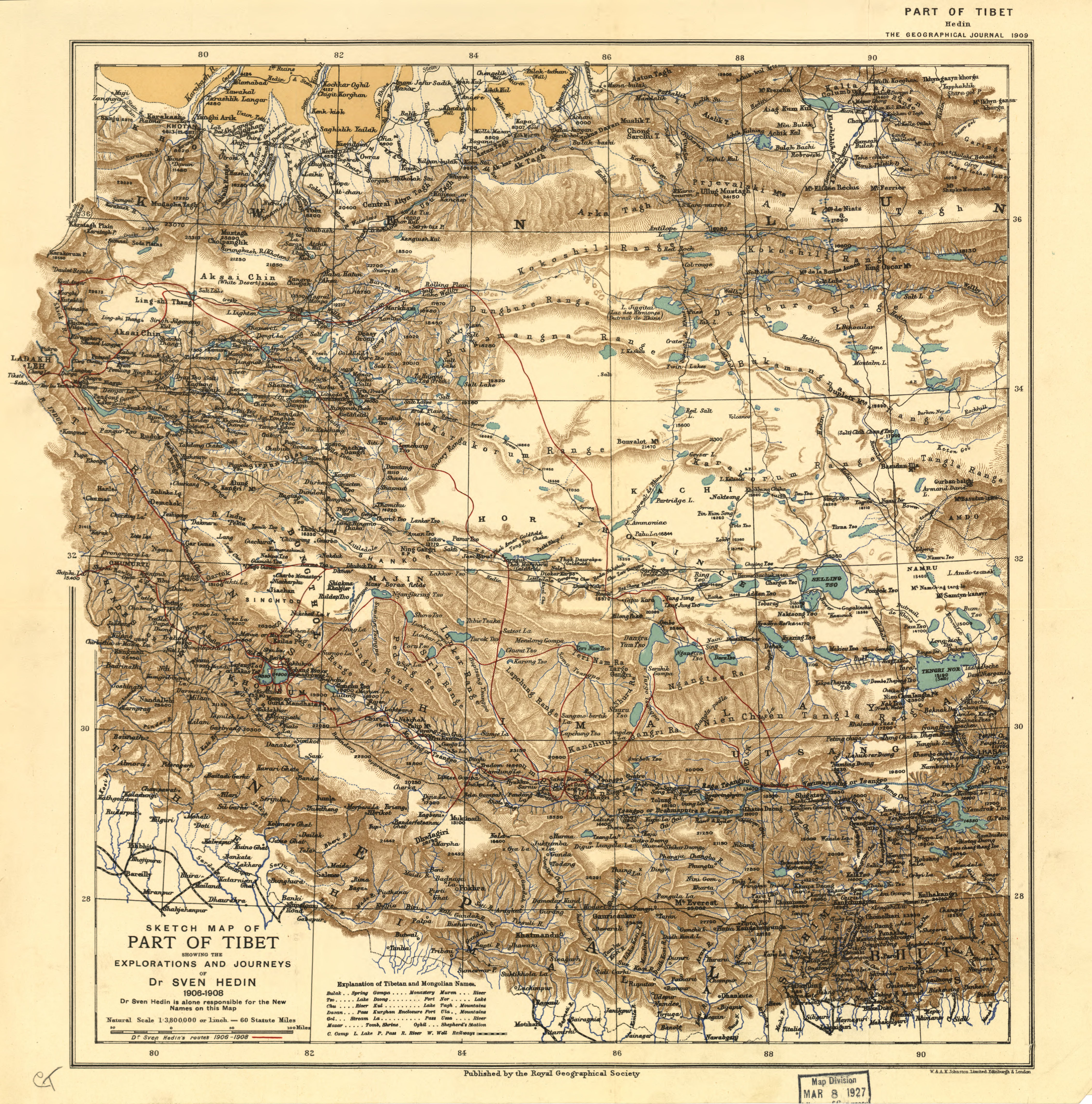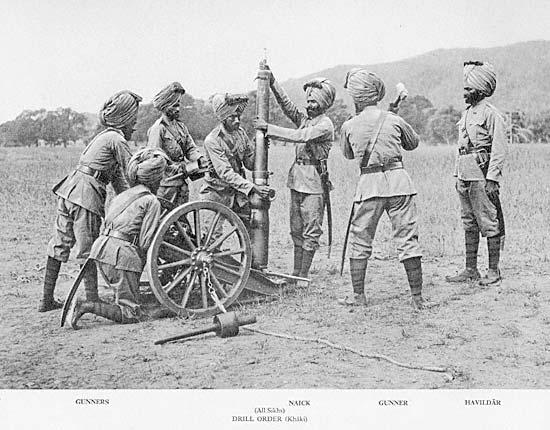|
Murgo
Murgo is a small hilly village which lies on the border of Leh district in the union territory of Ladakh in India, close to Chinese-controlled Aksai Chin. It is one of the northernmost villages of India. Name The name "Murgo" means "gateway of hell" in Tibetic languages. Record from the 1840s indicates the Turkic name was Murgai and Tibetan name was Murgo-Chumik. (''Chumik'' means spring.) History Murgo was a campsite on the difficult caravan route through Karakoram Pass, the last place with sufficient vegetation for fuel and grass. Czech paleontologist and biologist Ferdinand Stoliczka died here in 1874 during an expedition. A memorial was erected for him in the Moravian cemetery at Leh. There is a large Buddhist monastery at Murgo. Current status The village is now inhabited by a small civilian population of Baltis. However, the Indian Armed Forces have significant presence in the area. The Darbuk–Shyok–DBO Road running between Leh and Daulat Beg Oldi passes thr ... [...More Info...] [...Related Items...] OR: [Wikipedia] [Google] [Baidu] |
Depsang Plains Survey Of India Map 1916
The Depsang Plains represent a high-altitude gravelly plain at the northwest portion of the disputed Aksai Chin region of Kashmir, divided into Indian and Chinese administered portions across a Line of Actual Control. India controls the western portion of the plains as part of Ladakh, whereas the eastern portion is controlled by China and claimed by India. The Line of Control with Pakistan-administered Gilgit-Baltistan is west of the Depsang Plains with the Siachen Glacier in-between. Ladakh's traditional trade route to Central Asia passed through the Depsang Plains, with the Karakoram Pass lying directly to its north. The Depsang plains are also part of the area called Sub-Sector North (SSN) by the Indian military. The area sees frequent tension between China and India. Major standoffs between two countries occurred in 2013, 2015 and 2020. Name ''Depsang'' (or ''Dipsang'') in Tibetan means 'open, elevated plain'. Geography The Depsang Plains are located in th ... [...More Info...] [...Related Items...] OR: [Wikipedia] [Google] [Baidu] |
Daulat Beg Oldi
Daulat Beg Oldi (also Oldie, DBO) is a traditional campsite and current military base located in the midst of the Karakoram Range in northern Ladakh, India. It is on the historic trade route between Ladakh and Central Asia, forming the last campsite before reaching the Karakoram Pass. It is said to be named after Sultan Said Khan ("Daulat Beg"), who died here on his return journey after an invasion of Ladakh and Kashmir. Chip Chap River, the main headwater of the Shyok River, flows just to the south. The Line of Actual Control with Chinese-controlled Aksai Chin is 5 miles to the east. An Indian border outpost was established here in summer 1960 and remains till this day. An Advance Landing Ground was also constructed here, which is famed as one of the world's highest airstrips. DBO now has a road link, the 235 km-long Darbuk-Shyok-DBO Road, completed by the Border Roads Organisation in 2019 on a new improved alignment. [...More Info...] [...Related Items...] OR: [Wikipedia] [Google] [Baidu] |
Darbuk–Shyok–DBO Road
The Darbuk–Shyok–DBO Road (DS-DBO Road/DSDBO Road), also called the Sub-Sector North Road, is a strategic all-weather road in eastern Ladakh in India, close to the Line of Actual Control with China. It connects Ladakh's capital city Leh, via the villages of Darbuk and Shyok at southern Shyok River Valley, with the Daulat Beg Oldi (DBO) post near the northern border. The 220-km long section between Shyok and DBO was constructed between 2000 and 2019 by India's Border Roads Organisation (BRO). The DS-DBO Road has reduced the travel time between Leh to DBO from 2 days to 6 hours. Ajay BanerjeeIndia completes vital Ladakh road The Tribune (Chandigarh) 22 April 2019. Lt Gen Prakash KatochDSDBO Road completed – but what of the scam and the northeast? Indian Defence Review, 27 April 2019. History The Darbuk–Shyok–DBO Road traverses the historic winter route, also called the ''Zamistānee'' route, used by the trading caravans between Leh and Yarkand. Whereas the summer rou ... [...More Info...] [...Related Items...] OR: [Wikipedia] [Google] [Baidu] |
Ferdinand Stoliczka
Ferdinand Stoliczka (Czech written Stolička, 7 June 1838 – 19 June 1874) was a Moravian palaeontologist who worked in India on paleontology, geology and various aspects of zoology, including ornithology, malacology, and herpetology. He died of high altitude sickness in Murgo during an expedition across the Himalayas. Early life Stoliczka was born at the lodge ''Zámeček'' near Kroměříž in Moravia. Stoliczka, whose father was a forester who took care of the estate of the Archbishop of Olomouc, studied at a German Secondary school in Kroměříž. Although Stoliczka published 79 articles from 1859–1875, he never wrote anything in Czech. It is believed that he spoke German at home. In his Calcutta years he was an important figure in the German-speaking community there. Stoliczka studied geology and palaeontology at Prague and the University of Vienna under Professor Eduard Suess and Dr Rudolf Hoernes. He graduated with a Ph D from the University of Tübingen on 14 November ... [...More Info...] [...Related Items...] OR: [Wikipedia] [Google] [Baidu] |
Nubra Valley
Nubra, also called Dumra, is a historical region of Ladakh, India that is currently administered as a subdivision and a tehsil in the Leh district. Its inhabited areas form a tri-armed valley cut by the Nubra and Shyok rivers. Its Tibetan name ''Dumra'' means a "valley of flowers". Demands have been raised and BJP has hinted at creation of Nubra as a new district.3,000 Demonstrate for Separate District in Sub-Zero Temperatures at Kargil The Wire, 06/FEB/2020. , the headquarters of Nubra, is 120 km north from , the capital of Ladakh. The |
Spring (hydrology)
A spring is a point of exit at which groundwater from an aquifer flows out on top of Earth's crust (pedosphere) and becomes surface water. It is a component of the hydrosphere. Springs have long been important for humans as a source of fresh water, especially in arid regions which have relatively little annual rainfall. Springs are driven out onto the surface by various natural forces, such as gravity and hydrostatic pressure. Their yield varies widely from a volumetric flow rate of nearly zero to more than for the biggest springs. Formation Springs are formed when groundwater flows onto the surface. This typically happens when the groundwater table reaches above the surface level. Springs may also be formed as a result of karst topography, aquifers, or volcanic activity. Springs also have been observed on the ocean floor, spewing hot water directly into the ocean. Springs formed as a result of karst topography create karst springs, in which ground water travels through ... [...More Info...] [...Related Items...] OR: [Wikipedia] [Google] [Baidu] |
Telecommunication
Telecommunication is the transmission of information by various types of technologies over wire, radio, optical, or other electromagnetic systems. It has its origin in the desire of humans for communication over a distance greater than that feasible with the human voice, but with a similar scale of expediency; thus, slow systems (such as postal mail) are excluded from the field. The transmission media in telecommunication have evolved through numerous stages of technology, from beacons and other visual signals (such as smoke signals, semaphore telegraphs, signal flags, and optical heliographs), to electrical cable and electromagnetic radiation, including light. Such transmission paths are often divided into communication channels, which afford the advantages of multiplexing multiple concurrent communication sessions. ''Telecommunication'' is often used in its plural form. Other examples of pre-modern long-distance communication included audio messages, such as coded drumb ... [...More Info...] [...Related Items...] OR: [Wikipedia] [Google] [Baidu] |
Indian Armed Forces
The Indian Armed Forces are the military forces of the Republic of India. It consists of three professional uniformed services: the Indian Army, Indian Navy, and Indian Air Force.—— Additionally, the Indian Armed Forces are supported by the Central Armed Police Forces, Assam Rifles, Indian Coast Guard and Special Frontier Force and various inter-service commands and institutions such as the Strategic Forces Command, the Andaman and Nicobar Command and the Integrated Defence Staff. The President of India is the Supreme Commander of the Indian Armed Forces but the executive authority and responsibility for national security is vested in the Prime Minister of India and their chosen Cabinet Ministers. The Indian Armed Forces are under the management of the Ministry of Defence of the Government of India. With strength of over 1.4 million active personnel, it is the world's second-largest military force and has the world's largest volunteer army. It also has the thi ... [...More Info...] [...Related Items...] OR: [Wikipedia] [Google] [Baidu] |
Paleontologist
Paleontology (), also spelled palaeontology or palæontology, is the scientific study of life that existed prior to, and sometimes including, the start of the Holocene epoch (roughly 11,700 years before present). It includes the study of fossils to classify organisms and study their interactions with each other and their environments (their paleoecology). Paleontological observations have been documented as far back as the 5th century BC. The science became established in the 18th century as a result of Georges Cuvier's work on comparative anatomy, and developed rapidly in the 19th century. The term itself originates from Greek (, "old, ancient"), (, ( gen. ), "being, creature"), and (, "speech, thought, study"). Paleontology lies on the border between biology and geology, but differs from archaeology in that it excludes the study of anatomically modern humans. It now uses techniques drawn from a wide range of sciences, including biochemistry, mathematics, and engineering. ... [...More Info...] [...Related Items...] OR: [Wikipedia] [Google] [Baidu] |
Karakoram Pass
The Karakoram Pass () is a mountain pass between India and China in the Karakoram Range. It is the highest pass on the ancient caravan route between Leh in Ladakh and Yarkand in the Tarim Basin. 'Karakoram' literally means 'Black Gravel' in Mongolic. Historically, the high altitude of the pass and the lack of fodder were responsible for the deaths of countless pack animals while the route was notorious for the trail of bones strewn along the way. There is an almost total absence of vegetation on the approaches to the pass. Travelling south from the pass involved three days' march across the barren Depsang Plains at about . To the north, the country was somewhat less desolate and involved travellers crossing the relatively easy and lower Suget Dawan (or Suget Pass) before reaching the lush grazing grounds around Shahidullah or Xaidulla in the upper valley of the Karakash River. The pass is in a saddle between two mountains and about wide. There is no vegetation or icecap a ... [...More Info...] [...Related Items...] OR: [Wikipedia] [Google] [Baidu] |

.jpg)






